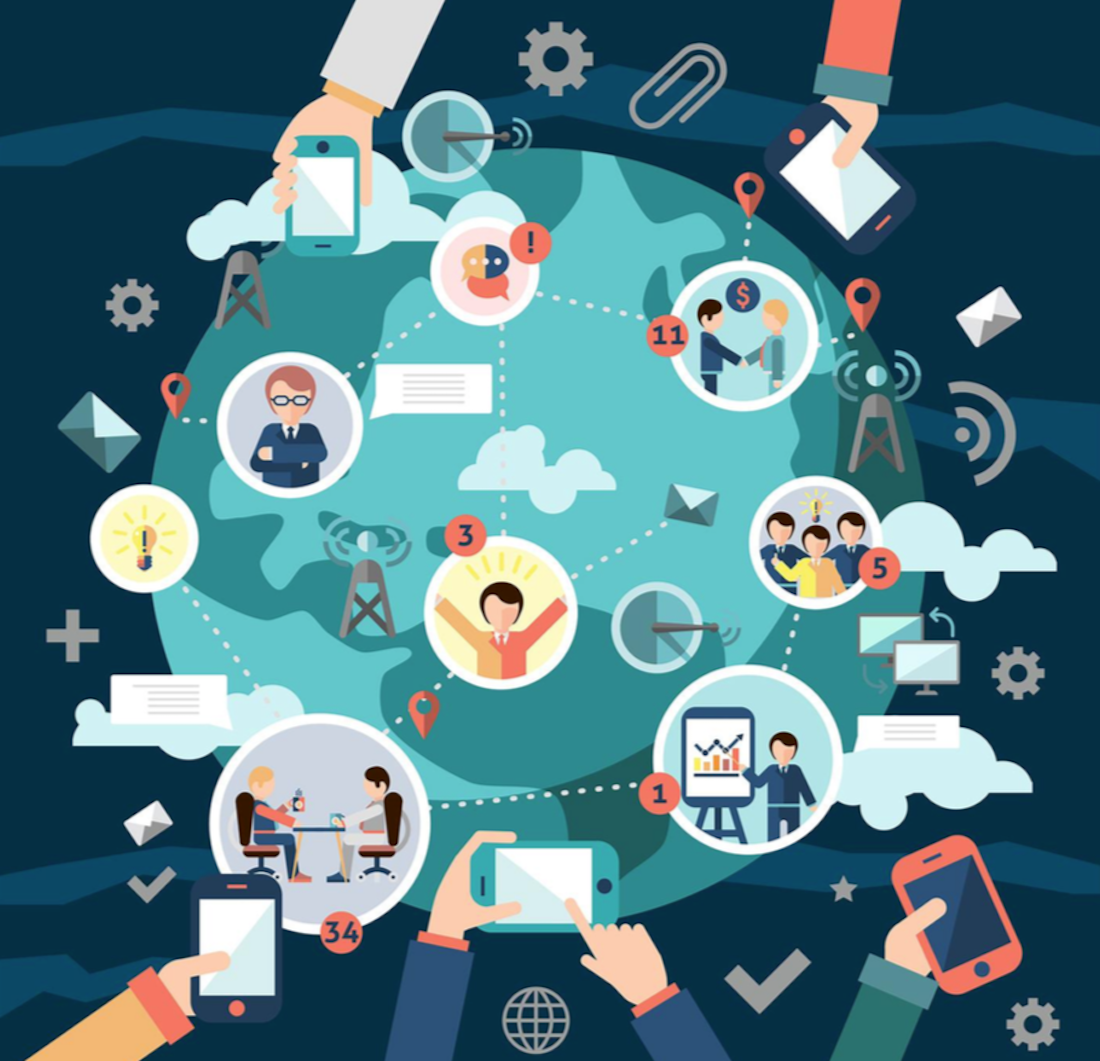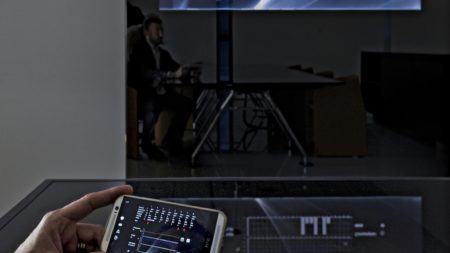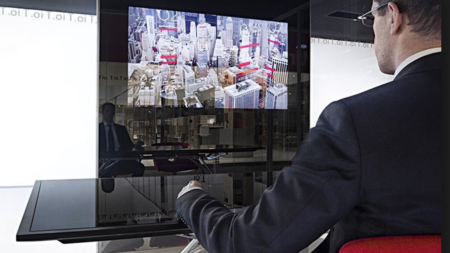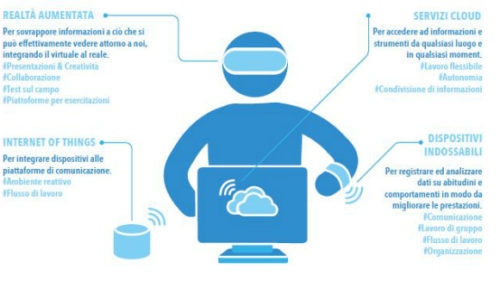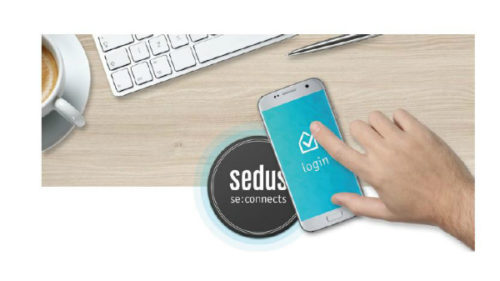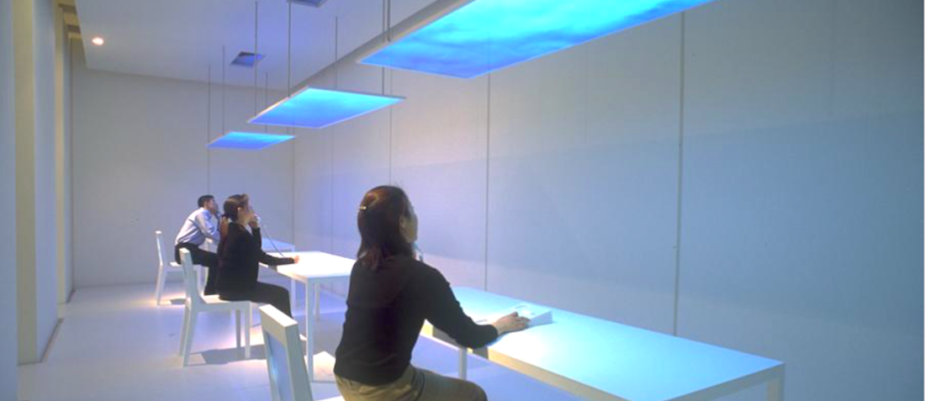
Internet of Things, apps, wearable devices, augmented reality, artificial intelligence and system for the monitoring and the changing of the environmental conditions: the office is in the midst of a real technological turn. How can management effectively deal with it?
On the edge between an instrument to allow new agile and flexible ways of working and a tool of a modern-day panopticon, a culture of technology in the office must rely primarily on a culture of trust.
Technology is all but simple when it comes to the management of an organization. First of all, even if it appears indisputable that new technological solutions allow new models of smart, flexible, agile, people and goal-oriented organization and ways of working, on the other hand, it creates, at the same time, constraints and other kinds of issues that arise in the everyday work life.
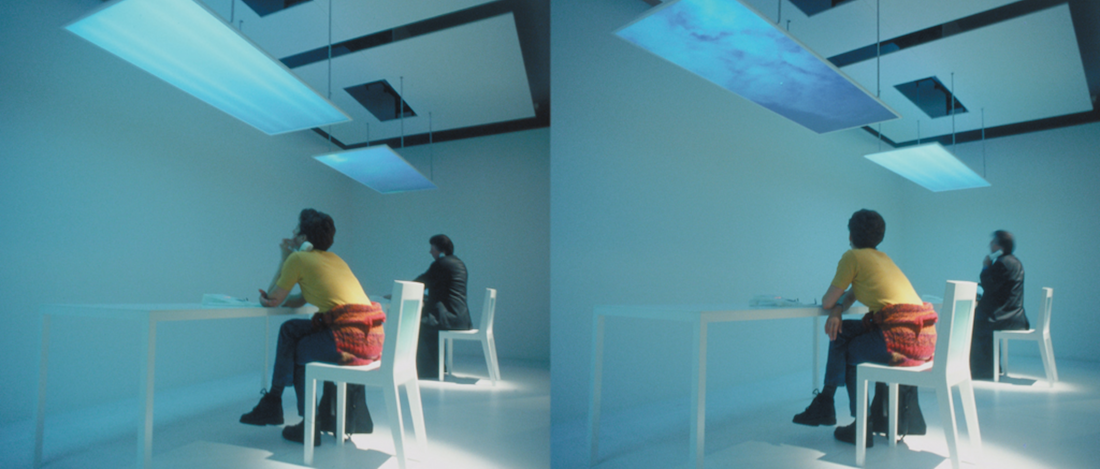
A good example can be the widespread use of dedicated apps that employees can use to book different workspace in the context of activity-based offices.
If on one side this tool fosters a more dynamic and collaborative way of working, on the other it stigmatizes automatically others, creating, just with its presence, a new “ethic of (the good) working”.
So, the first feature of technology is its own capacity to structure a normative field of possible and acceptable actions.
By doing so, technology “leaves traces” in the shape of data, making the subject always visible. These two aspects, namely the structuring of a field of possible actions and the panopticon view, are often the main cause of employees’ challenging and resistance. A top-down kind of implementation, therefore, risks being understood as the company’s will of better and wider control over its own employees, a destabilization of their work-life balance and a reductive approach that turns people in just a quantifiable series of numbers.
Although, it is not about just focusing on how people perceive and live technology in everyday working life, but, I think, technology in the office requires a new form of thinking organization management towards a constant co-design model. Starting from the way people actually and practically dwell the workspace and the needs created through working practices, technology can offer the solution to collaboratively craft day by day the workplace and the ways of working, tending to a certain controlled degree of entropy which is necessary for a system that wants to evolve.
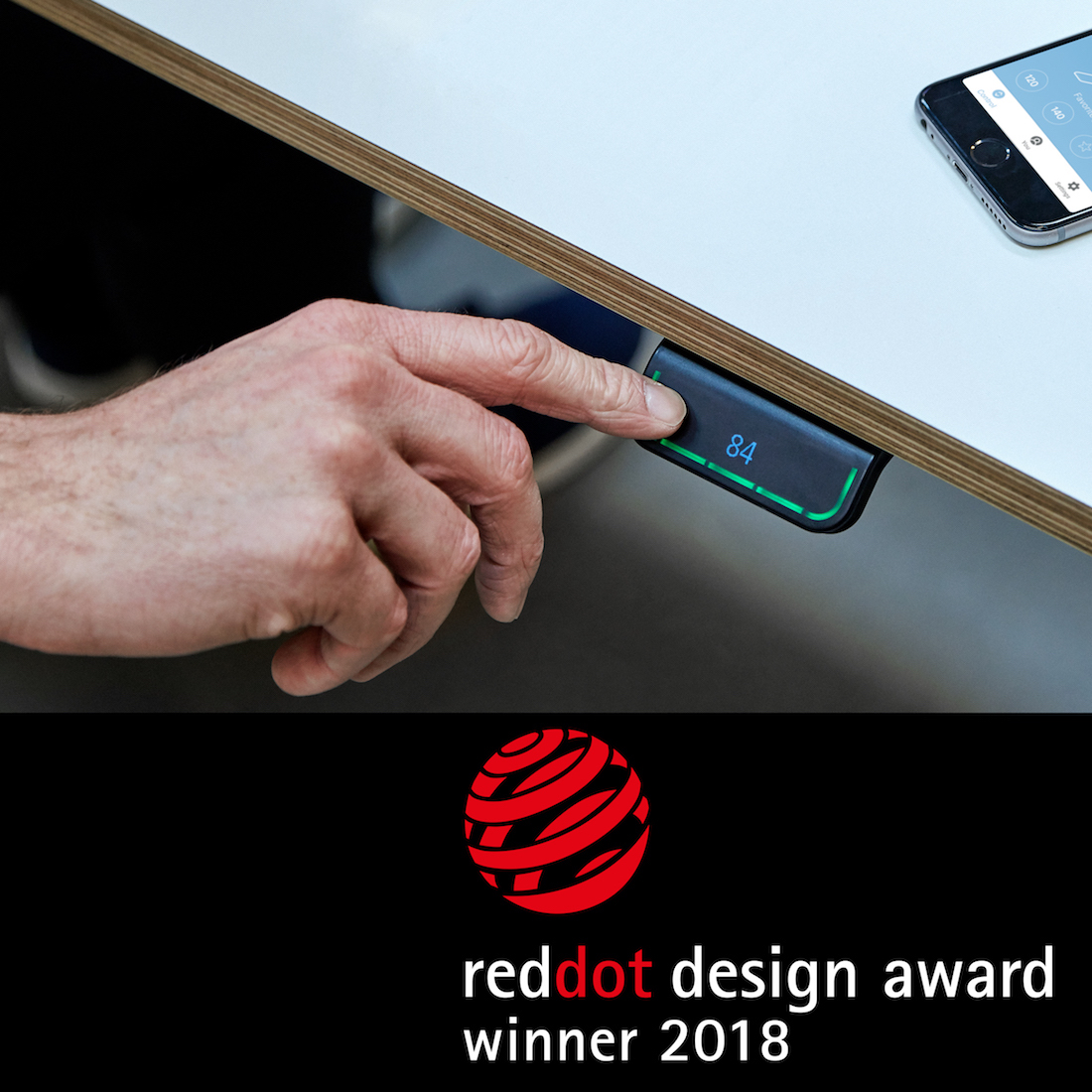
As it was described in a recent paper, when the HR management of the University of Edinburgh introduced a technological system to book some conference and training rooms, the decision has caused an atmosphere of mistrust about the way collected data would have been managed and used. Although, following an open dialogue path and after stipulating clear policies about data management, the employees themselves became actively involved in the project, indicating new ways of effectively use IoT systems, for example for monitoring the level of background noise, which was perceived as a more compelling issue.
The “embedding process” of technology in the workplace, therefore depends on the trust perceived and given by the employees: a trust that is constantly re-negotiated and that is must be the foundation of the company’s culture.
In conclusion, technology, as enabler of, and a constraint on, human action in nowadays organization can be the tool that companies use in order to create a trust-based effective structuration of “a controlled entropic” organization that uses an IoT-based workplace as a responsive, resilient and malleable environment constantly co-created by the relations of the actors on the stage, where creativity, as a way of finding different solutions in facing constraints and always changing conditions, it is part of the everyday routine of dwelling.
Text by Gabriele Masi.
Captions
Opening and 1, Personal Skies at Workspheres, Fukusawa Naoto + Ideo.
Exposed at MoMA NewYork in 2001, Personal Skies at Workspheres explored the creation of personal space within an office environment. The design was created to encourage public participation and for people to experiment with different workplace scenarios.
2, 3 I.o.T (intelligence of Tecno), design studio Gtp and others.
Wellbeing and cost-saving: a system of furniture, devices and hubs, all connected to offer real-time information and solutions to designers, managers and workers. Developed by Studio Gtp along with TIM, STMicroelectronics, Digitronica.it, Ilevia, InfoSolution and Videoworks, I.o.T has required two years for his implementation.
4, Desk Panel Genius, Linak.
Linak Desk Panel DPG1C for sit-stand desks has been awarded the Red Dot Award 2018 in “Production Design” category. Combining a unique feature such as intuitive handling without the use of buttons and a motivating reminder function through an integrated LED light strip to foster user’s favourite desk heights, it uses also an app connectivity via integrated Bluetooth wireless technology.
5, 6 se:connects, Sedus.
Sedus’s app se:connects is designed for helping to solve some of the main problems of the changing towards agile and smart ways of working. The data collected through the app gives all the information to optimize the usage of the space, making the company and the workers both happier.
